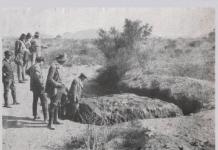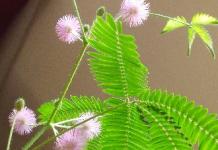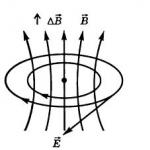Few things can compare to the magic of waterfalls - be it Niagara Falls or a small stream near your home. Eat many ways to photograph flowing and falling water, and this article contains useful tips and techniques on how to do it most beautifully.
1. Equipment
Of course, the choice of equipment depends on what kind of shot you want to take. But this is also difficult to predict in advance, before you arrive at the photography location. Therefore, take care in advance. Typically, to photograph a waterfall you will need the following:
- Tripod– as with any other landscape photography, a tripod is a photographer’s best friend. With it, you can frame the frame exactly the way you want, and you can also take long exposure photos.
- Circular polarizing filter– an important piece of equipment that helps remove reflections and glare from the surface of the water. Sometimes you can do without it if there is only a waterfall in the frame. But it’s better to have it on hand in case you decide to include in the photo the surface of the water into which the waterfall flows - it will remove reflections and allow you to see various stones at the bottom “through” the water.
- Neutral density filter (ND)– you will need it if you shoot at long exposures during the day when there is a lot of light. It will block some of the light and allow you to take such a shot. Such filters come in different types, with varying degrees of light transmission.
- Lens cloth– necessary for the safety of your camera (read about). Use a cloth to wipe the lens from drops and water mist (and do the same with the camera, of course).

2. Camera settings
Eat several options depending on the frame, which you will do - "silk water", "frozen movement" or details.
2.1. "Silk water"
To make this interesting effect with water you need shoot with long exposure. Mount the camera on a tripod, select the “shutter priority” mode (letters “S” or “Tv”) and set the ISO as low as possible (100). After this, set the shutter speed in the range from half a second to 4 seconds, to get a cool blur effect.

Try several shutter speeds to get the blur you like best. She will depend on the speed of flowing water, so you'll have to experiment. If you can't get a long enough shutter speed, you need to reduce the amount of light entering the camera - this is where a neutral density filter comes in handy.
Also keep in mind that swaying trees will also be blurred into the frame, so it is ideal to photograph when there is no wind.
2.2. Frozen movement
This frame is especially interesting in case of rushing waterfalls, and here a completely opposite approach is required. Do you need shutter speed as fast as possible to “capture the moment” capture a “frozen” water flow. Choose aperture priority mode and set the shutter speed to 1/500 second or faster.

Here you won't need a filter and you might not even need a tripod. If there's not enough light for photography at this shutter speed, raise the ISO to 200, 400, or even higher if necessary for good exposure.
2.3. Parts photos
Instead of taking a general shot of a waterfall, you can take a photo of an interesting rock, some kind of stone or plant. Mount the camera on a tripod, select “Aperture priority” mode (“A” or “Av”). This way you can control the depth of field and bring exactly what you want into focus.
Remember that on camera aperture values are expressed as fractions, i.e. small numbers mean the aperture is wide open (f/8 is smaller than f/4 because 1/8 is smaller than 1/4).

A closed aperture lets in less light, but both the subject and the background remain sharp in the photo, and all the details are visible. When the aperture is open, only part of the image will be in focus and the rest will be blurry.
Look at your landscape and decide what should be in focus and what can (and should) be blurred. To highlight the “protagonist” of your photo, choose a wide aperture (small numbers like f/4 or f/2.8). If the background is also important, then stop your aperture down (to something like f/16 or f/22) to keep everything in the photo crisp and clear.
3. Composition
Composition is a very important part of a good photograph, especially when it comes to about landscape photography. Firstly, remember about rule of thirds and how your eye follows the picture. Secondly, the lines will guide movement of the viewer's eye (and in the case of a waterfall and a flowing river, there will definitely be such lines). Pay attention to both the waterfall itself and what surrounds it.

- When you arrive at the place, ask yourself the first and the most important question- “What’s so special about this place?”
- Use bracketing - take pictures not only at different apertures and shutter speeds, but also with exposure compensation(+/-) to get lighter and darker shots - you may find them useful.
- Shoot in RAW– this will help when processing photos if something was not done perfectly at the time of taking the photo.
- Experiment– don’t do the same thing every time. Try different shutter speeds, detail shots, different framing, and photographing from different angles. This will give you more options and more interesting shots.
Water is life force. No one and nothing can exist without water, it is everywhere - dangerous and beautiful at the same time. And for us, as photographers, it would be simply madness to ignore this seemingly ordinary, but true miracle of nature. In this article we will talk about how to shoot water in motion, how to make a photo “live” and create that magical blur effect of running water.
Step one. Choosing a shooting location
First, think about the context in which you would like to capture the water. There are plenty of options, it all depends on your capabilities and location. If you want to capture the energy and drama of running water, shoot waterfalls; if you want to work with something simpler and more predictable, use city fountains. If you prefer something more spacious and large-scale, go to the coastline, and flowing rivers will create a more interesting and creative image.
In each of the mentioned states, water is unique, and although we still have one subject to shoot, each of them has its own technical features of shooting. We will discuss which ones below.

Step two. Basic rules
Before we get into the technical details, let's remember the basics of any landscape photography. You need to understand that your photos won't look amazing just because there is water in them - you need to make sure that all elements of the frame, such as composition, are well thought out. Therefore, to begin with, select a shooting point, study the object, the nature and direction of movement of the water, and determine the most advantageous angle. To determine the visual centers of the frame, use the classic “rule of thirds.”

Step three. Technical Tricks
Now let's talk about camera settings. In fact, the key parameter in capturing water movement is shutter speed. It is the long shutter speed that gives photographs that magical blur of running water and turns quite ordinary landscapes into real masterpieces.
So: first, set up your camera on a tripod. The more stable the camera is, the better. Ideally, you can use a shutter timer or cable release to avoid any slight camera shake.
In the settings, select “shutter priority” shooting. Set the shutter speed to 1/10 second or more. You'll have to experiment with exposure settings. To compensate for the amount of light entering the matrix (due to high shutter speed), set the aperture to a low value (f7 and beyond, depending on the capabilities of your optics). It is also worth setting the ISO to the minimum value.
The best option is to use Neutral Density filters. They allow you to reduce the amount of incoming light without changing image parameters such as contrast and color. In fact, they allow you to shoot during the day at “night” exposure levels.
Once you're done with the settings, start shooting!

Step four. Don't limit yourself
Don't limit your photographic vision and don't forget that water doesn't only exist in natural bodies of water. It surrounds us everywhere: splashes and drops, small streams of water. To photograph water correctly, first try to observe and understand how water reacts to various physical phenomena
Whereas when shooting large bodies of water, the moment of capturing the movement of water depended on a long shutter speed to show the blur of movement, shooting a small amount of water implies freezing the action. That is, you will need a very short shutter speed and high shooting speed. To capture the moment of movement, you can use the “continuous” shooting mode.

Step five. Go and do it.
We hope that in our article you found some useful tips for yourself and can now start shooting on your own. If you plan to photograph natural bodies of water, plan to spend a lot of time on it. Most likely, you won’t be able to do everything perfectly the first time, but don’t be afraid to experiment, work on yourself and you will be rewarded for it more than once. And remember, to get your perfect shot of running water, you don’t have to go on a long trip, look around: splashes, drops, trickles of water and rain puddles - water is everywhere, there is an endless field for experimentation.

20684 Improving your skills 0
Do you like photos when a drop, breaking on the surface of the water, creates fancy splashes? Do you want to learn how to take beautiful photos of them? Then this little lesson is just for you!
First of all, for such photography you need to know a few basic principles. Firstly, unlike, to photograph drops, the photographer will need considerable patience, since one out of dozens of photographs will be successful. The rejection rate is very high. This type of photography requires quick reactions, so to photograph water droplets, the camera must be set to burst mode.
Secondly, to prevent the drops from being blurry, the camera needs to stop moving. This will require a short shutter speed, about 1/500 - 1/1000. Another condition is a not very small depth of field, that is, an aperture value of at least f/5.6.
The third condition follows from the previous one - in order to photograph water, you will need either a powerful light source or high light sensitivity, and possibly both.
Fourthly, to create a beautiful background you need colored paper, colored plastic or other surface, and a transparent container for water. Using these simple items you can create beautiful drops.
Finally, to avoid glare on the water surface, it is better to direct the light source towards a colored background rather than the water container itself.
Equipment
So, the list of necessary equipment includes: a manual camera, a tripod, an external flash, a remote control, a water container, a plastic bag and a colored background, as we just talked about.
Even if you only have a kit lens at hand, don’t despair. There is no room for experimentation here. Even though the camera is fixed on a tripod, it can be moved, so it is better to use a remote control when shooting.
Step-by-step instructions for photographing water droplets
Step 1. Prepare the shooting location. As an example, the camera is mounted on a tripod on the left, and a 1000 W video lamp is used for lighting (it is mounted on the right). The light is directed onto a colored background. To be fair, this example is used only to demonstrate the general setup. To beautifully illuminate the drops, it is better to place the light source at the back and side of the container. The flash is usually mounted to the side of the falling drops. However, if you place it in front of the background, you can get beautiful reflections on the water, depending on the color of the background. You can also illuminate objects without using a background, but you need to point an additional light source in front of the lens.

Step 2. Prepare a container of water, as well as a source from which the water will drip. These could be:
a) pipette
b) an ordinary plastic bag with a small hole in the corner: water will drip through it (one of the best options)
c) tap
d) a bottle with a sports neck (this is the bottle used for this example)
The source of liquid should be fixed so that the drops fall in one place. This is necessary so that you do not have to re-focus the camera on the point where the water falls each time.
Step 3. Mount your camera on a tripod. You will need a macro lens, but if you don’t have one, you can use a Soviet lens with the ability to manually set the required aperture with macro rings (for example, Jupiter 37A and a set of macro rings, it is very inexpensive and the quality is excellent). If you have a soap dish, switch it to macro mode. But remember that it will not be easy to get high-quality images with its help. The best point-and-shoot cameras for this type of photography are compacts with manual exposure settings.
Step 4. Set your shooting parameters, keeping in mind that the shutter speed should be fast. For this example, the shooting parameters used were 1/1250, f/6.3, ISO 500.

Step 5. Set the camera to focus mode M (manual focus mode). Focus on the test stream or any object dropped into the bowl. Remember that when focusing manually, the place where the drops fall must match. Take a few test shots to make sure the drops are sharp.
Step 6. Take pictures! The main secret of success is in the number of photographs and your dexterity and dexterity. However, even in such unpredictable plots, the sniper ideology works. The more attentive the photographer, the better the photographs will turn out. Thoughtless shooting in machine gun mode may not lead to the desired results.

How to photograph splashes
If you like working with water, then the next question that may arise is how to photograph splashes, since when using a bag with liquid it will not be possible to organize enough of them. In this case, you can make several small balls of foil and throw them into the water while shooting. They can arrange splashes of various sizes. Also, if you don’t want to use a bag of liquid, you can put some water in a regular cocktail straw and release it. But with this design, large drops will drip down. In order to adjust their sizes, you can use pipettes.

Another feature when shooting drops is the photo of the so-called “crown”. This effect only occurs if you throw large enough objects, such as a nut or bolt, into the water. Depending on the shape of the item, you can get different objects. However, it is not possible to fix the “crown” the first time. Out of 100 shots, only one can be successful.
And one more tip - experiment! Both with the camera position and with the light. Additionally, to achieve interesting results, you can:
1) change the background (even indoor plants can be used as a background)
2) change the height from which the drops fall (the higher the bottle, the more drops)
3) tint the water that drips from the bottle: the water in the container will be transparent, and the water in the bottle will be colored, which will create an interesting effect.
4) change the direction of light: at different angles of incidence of light rays, water looks different. The drops look best when they are illuminated with back-to-side light.
5) change the shooting point: note that in the example above the camera is located almost at the level of the drop, and in the example of step 4 the drop is shot from above.

That's basically all. :) All your photography and successful shots!
You will need
- - a camera with very short shutter speeds, starting from 1/2000 and less;
- - lens for macro photography;
- - external flash capable of working at short shutter speeds;
- - tripod;
- - a vessel with water;
- - napkins;
- - straw;
- - white background.
Instructions
Place a bowl of water on the selected surface. It is convenient to make large drops using a straw. You can submerge it lightly in water, then close the hole with your finger, remove the straw from the water, and then open the hole. A large beautiful drop will fall from its end. You can automate the process by hanging something over the vessel from which the drops will fall. Use an upside down bottle with a slight twist on it, or you can use a plastic bag with a very small opening.
Secure the drip source above the bowl so that the water always falls in the same place. This is important because you can focus once and not care about it anymore. A straw is useful for focusing. Place it in the place where the drops fall and focus.
To more accurately determine sharpness, use one trick. Take a piece or chewing gum and place it on the bottom, under the surface where the drops are dripping. Place a pin or nail on it so that its end sticks out of the water. This way you can focus extremely accurately. Do not use autofocus; the settings will give the most accurate results.
Set a white background behind the vessel. Lighting can be done in two ways: point the flash at a vessel with water or place a light source behind the background, pointing it towards the camera, so you get backlight. For best results, try different options. If the plate with water is glass, then install the light from below - you will get unusual results.
Experiment with drops of water. You can get interesting splashes by throwing objects into the water. A foil ball works well for these purposes. Thanks to its complex surface, it produces a large amount of splashes.
Use continuous shooting. A drop of water falls so quickly that the human eye does not have time to capture some moments, and it is quite difficult to catch the desired frame even if you are not used to it. Disable any settings that prevent your camera from shooting quickly. Typically these include noise reduction, stabilization and autofocus. With continuous shooting, you will notice in what sequence and how a drop of water falls and merges with the surface. Over time, with some practice, you will learn to capture the moments and press the shutter button at the right time without burst shooting.
There are different ways to look at water, such as a captivating backdrop from Hollywood movies, a dreamy forest stream... or perhaps as an element full of movement. Learn how to photograph water and what laws of photography it obeys. Let our six tips for photographing water help you improve your creative path.
The advantage of aquaphoto is that water landscapes are all around us. And almost every form of water can look good in photos. You can even find great shooting locations right near your home. And if suddenly you feel like “something” is missing, you can go further by water...
Photographing "Big" water
Large surfaces of water such as ponds, lakes and seas can look very impressive on camera. Look at the surface of the water at sunset, you will be surprised by what you see.

Canon 5D Mark IV, Canon EF 16-35/2.8 III, 1/13 S, F/18, ISO 100, 16mm focal length
The resulting image directly depends on the exposure. In the top example the shutter speed is 1/13 sec, but the picture will change dramatically as the exposure changes. So if you plan to use a gradient filter, or an ND filter, stop down the aperture too much to get greater depth of field, you will have to use , to minimize camera shake and be able to capture water at slow shutter speeds. Please note that the movement of the water will be blurred, and the picture will have a more dreamlike look.

Same place. Shot with Canon 5D Mark IV, Canon EF 16-35/2.8 III, 2.5S, F/22, ISO 100, 24mm focal length
Water photography is not an excuse to shoot only at sunset. You can also take photos throughout the day. You can also shoot large expanses of water, such as the sea. To prevent your photo from being boring, include a coastline in the landscape.

Canon 5D Mark II, Canon EF 16-35/2.8 II, 1/80 S, F/7.1, ISO 100, 16mm focal length
How to Photograph Surface Reflections
Coastlines look interesting on the surface of the water. Trees, buildings, mountain peaks - everything that is reflected in the water adds a unique story to the picture.

Canon 5D Mark III, Canon EF 16-35/2.8 II, 1/60 S, F/11, ISO 100, 35mm focal length
Please note that these photos can only be taken in very calm water. Study the "weather behavior" in a specific area. The photo above was taken early in the morning, the wind was strong the rest of the day and the top of the Matterhorn was only visible once.
It is easier to get a good image if the subjects are very close to a small surface of water where there are no large waves, for example. The best candidates for water photography are small garden pools or small park lakes.

Canon 5D Mark II, Canon EF 16-35/2.8 II 1/320 sec, F/5.6, ISO 100, 20mm focal length
Another thing to keep in mind when shooting reflections: while for landscape photography it is recommended to place the horizon line quite high or vice versa low, when photographing the surface of the water it is best to place the horizon in the middle. Thus, due to symmetry, it will be possible to convey majesty and the photo will really shine. But you don't have to adhere to this recommendation at all costs; with sufficiently calm water surfaces, you can even take wonderful photos, as shown below.

Canon 350D, Macro-Revuenon 24/4, 1/40 s, probably f/8, ISO 100, focal length 24 mm
How to shoot water against the light
Backlit photographs require special photography skills. If you're lucky, the light won't be too intense and your camera will be able to capture the full dynamic range. In extreme cases, the sun will be too “fiery” in the picture. And since it is also reflected from the mirrored water surface, most of the image will be too bright.
If this problem is critical, there is an effective way to solve it. Take several identical photos with different exposure settings. A built-in camera function called " Exposure bracketing" (or similar). When you activate it, the camera will take a series of photos with different indicators when you press the shutter button. Next, combine the result into one photo in post-processing.

Canon 5D Mark IV, Canon EF 16-35/2.8 III, 1/160 to 1/1250 S, F/11, ISO 100, 23mm focal length
Photographing water using a polarizing filter
You can also use another trick for capturing reflections - use . Turn it until all unnecessary reflections disappear and you get a perfect water surface. To get an idea of the difference between shots with and without a polarizing filter, take a look at the couple of photos below.

Without polarizing filter. Canon 5D Mark IV, Canon EF 24-70/2.8 II, 1/80 sec, F/8, ISO 400, 25mm focal length

Using a polarizing filter. Canon 5D Mark IV, Canon EF 24-70/2.8 II, 1/80 sec, F/8, ISO 400, 25mm focal length
Meanwhile, you should not strive to always completely get rid of reflections. After all, they make water... water.
How to photograph water in fountains
The water in the city is quite photogenic. Since fountains are usually small in size, they can be easily walked around and photographed from different angles. This way you can take many different images in just a few seconds.

Canon 40D, Canon EF-S 10-22/3.5-4.5, 1/30 S, F/8, ISO 100, 10mm focal length

Canon 40D, Canon EF-S 10-22/3.5-4.5, 1/160S, F/8, ISO 100, 10mm focal length
If the fountain is decorated with sculptures, you can choose the angle of shooting when they are reflected in the water. This will give you several more composition options.

Canon 40D, Canon EF-S 10-22/3.5-4.5, 1/80 S, F/8, ISO 100, 10mm focal length
Experimenting with your shutter speed can help bring your photo composition to life. Please note that a slow shutter speed will not freeze the movement of the water, the drops will be blurry. If you really want to stop the flow of the frame, use very fast shutter speeds.

Water jet close-up. Canon 5D Mark II, Canon EF 24-105/4, 1/640 S, F/4, ISO 200, 105mm focal length
Fountains photographed at night are another special case. In this case, using a tripod and long camera shutter speeds will help you capture the beauty of water with dignity. This is also a great way to get a shot without tourists. A long exposure works like an “anti-pipe filter”.

Canon 350D, Canon EF-S 18-55/3.5-5.6, 10.0S, F/22, ISO 100, 18mm focal length
Photographing water in streams and rivers
Flowing water can be a great way to add life to an image when photographing a landscape. Most of the frame can be occupied by the landscape itself, and the stream can add dynamics to the composition.
Pay attention to the shape of the watercourse. When it's just a straight line, you can get a good shot, but it won't be attractive, unless the arrow-straight water serves as a dynamic pointer and leads the viewer's eye to important subjects. Look for turns and fit them into the image. One common example is streams in a forest that form an S-shaped curve.

Canon 5D Mark III, Canon EF 16-35/2.8 II, 2.0 S, F/22, ISO 100, 16mm focal length
Try it
Take the photos from this one as a basis. Go to the nearest body of water and take pictures. The area that is near you can be very promising in terms of getting interesting photographs of the water surface. Try it!

Canon 5D Mark III, Canon EF 70-200/2.8 IS II, 1.0s, F/16, ISO 100, 200mm focal length


















